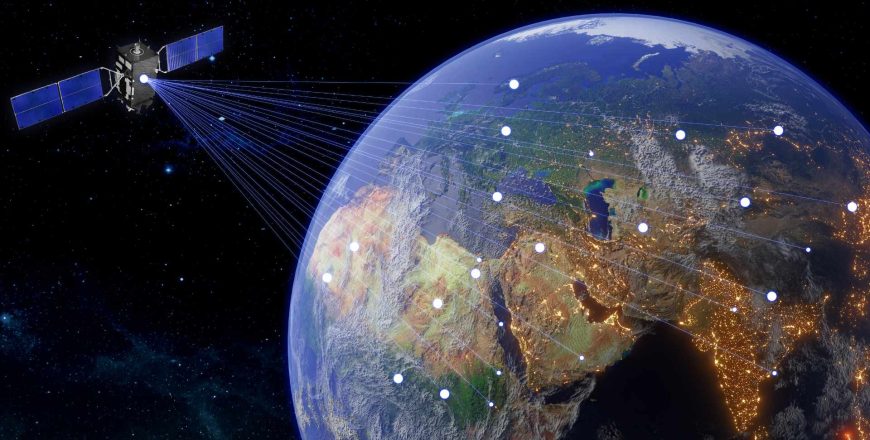An Overview of Satellite Communications

Course Overview
Satellite communications (SATCOM) play a critical role in global connectivity, enabling voice, data, and video transmission across vast distances where terrestrial networks are impractical. As advancements in non-terrestrial networks (NTN) continue to shape the industry, this course provides a comprehensive understanding of satellite communication principles, technologies, and applications.
In this course, participants will explore key concepts such as modulation and multiple access techniques, including Single Channel per Carrier (SCPC) and Multiple Channels per Carrier (MCPC), as well as Demand Assigned Multiple Access (DAMA) for dynamic bandwidth allocation. Participants will also learn how to optimize system performance through Forward Error Correction (FEC), Adaptive Coding and Modulation (ACM), and spectral efficiency strategies.
The course covers essential satellite frequency bands like C-band and Ku-band, along with circular polarization techniques to minimize interference and enhance signal quality. Participants will also learn link budgeting, factoring in coupling loss, LNA/LNB noise, and environmental effects, while addressing adjacent satellite interference and optimizing carrier spacing for efficient network performance.
The course also provides in-depth explanations of essential satellite devices, including Low Noise Block (LNB) converters, Block Upconverters (BUC), Uninterruptible Power Supplies (UPS), and Very Small Aperture Terminals (VSAT). By the end of the course, participants will gain the knowledge needed to design, analyze, and optimize satellite networks for various applications in telecommunications, broadcasting, and aerospace.
Target Audience
- Telecommunications Professionals
- IT & Network Engineers
- Broadcasting Specialists
- Satellite Operators
- Government and Regulatory Officials
- Defence and Aerospace Personnel
- Oil, Gas, and Maritime Industry Professionals
Duration & Training Format
- Classroom: 3 days
- LIVE Virtual: 21 hours
- A minimum of 8 or more participants is required for a Classroom session to commence.
- A minimum of 6 or more participants is required for a LIVE Virtual session to commence.
- LIVE Virtual courses can be conducted for 5 hours or 7 hours daily. Please note that the number of training days will be extended if you opt for 5 hours daily.
Upcoming Course Dates
18 – 20 Jun 2025 (Wed – Fri), GMT +8
3 – 5 Dec 2025 (Wed – Fri), GMT +8
If you are keen on attending the above scheduled courses, please register your interest via our course enquiry form.
Course Objectives
This course aims to equip participants with the fundamental SATCOM knowledge and motivate them to further their knowledge in this domain. At the end of the course, participants will be able to:
- Demonstrate a thorough and solid understanding of the fundamentals of SATCOM, including different types of satellites, earth stations, and VSATs
- Identify and describe the frequency spectrum and satellite bands, including the bands used for different applications such as TV, radio, and Internet
- Use terminology related to satellite radio link planning, including link budget, satellite footprint, and elevation angle
- Analyze technical and regulatory challenges related to SATCOM, including licensing, interference, and spectrum management
- Explain multiple access techniques used in SATCOM
- Identify and mitigate the impact of free space loss and atmospheric impairments on SATCOM
- Understand the impact of antenna design on beam shaping and coverage area, including antenna gain, beamwidth, and polarization
Course Outline
- SATCOM Fundamentals
- Transmission Equation
- Advantages and Disadvantages of Satellites
- Types of Satellites and Orbits
- LEO vs MEO vs GEO
- Satellite Launching
- Satellite Subsystems
- Basic Terminology: Inroute vs Outroute, Uplink vs Downlink
- Satellite Transponder
- Spot Beams
- Satellite Footprints EIRP
- Beam Shaping
- Polarization
- Modulation
- Frequency Bands
- Link Budget
- Rain Margin
- Coverage Angle and Area
- VSAT Components
- ODU vs IDU
- Uplink and Downlink Chains
- LNB and BUC
- Noise Figure
- Feed Horn
- Examples of LEO and GEO Satellites
- Global, Wide and Narrow Spot Beams
- Astronomical and Navigation Satellites
- Reconnaissance and Weather Satellites
- Communication Satellites
- Fixed Service Satellites
- Mobile Service Satellites
- Direct Broadcast Satellites
- Satellite Phone, Radio and TV
- Star and Mesh Topology
- Link Budget Calculations
- Installing Satellite Dish
- Modulation and Multiple Access
- Need for Modulation
- ASK, FSK and PSK
- QAM, APSK and M-PSK: 8QAM, 16QAM, 32QAM, 64QAM, etc
- Multiple Access Systems: FDMA, TDMA, CDMA
- DAMA, SCPC, MCPC
- Forward Error Correction (FEC)
- Adaptive Coding Modulation
- Block Codes, Convolutional Codes
- Typical FEC Rates
- MODCODs Variation with Environment
- Quadrature Amplitude Modulation
- Spectral Efficiency
- Case Study: A Study into an Operator’s Transformation of VSAT Network
- Fiji Islands – Geography
- Fiji – Telecom Statistics
- Transmission Layout
- VSAT Network
- Telecom Operators in Fiji
- Earth Station and Satellite Beam
- VSAT Remote Setup
- Transformation Journey
- Project Challenges
- Benefits
- Learnings
- Emerging Trends in the Satellite Industry
- Beam Hopping
- Docking
- StarLink and OneWeb
- Hubble and James Webb Space Telescope
- Second Gen Galileo Navigation Satellites
- Anti-Satellite (ASAT) and Direct Ascent Anti- Satellite (DA-ASAT) Technologies
- Laser Communications Relay Demonstration (LCRD)
- Next-generation Interceptor
- Project Kuiper – $10 Billion Venture
Note: A Certificate of Completion will only be issued upon achieving at least 75% attendance for the course.
Pre-requisites
No pre-requisite knowledge is required but some background in wireless would be beneficial.


